Journey through Patagonia's most spectacular remote places
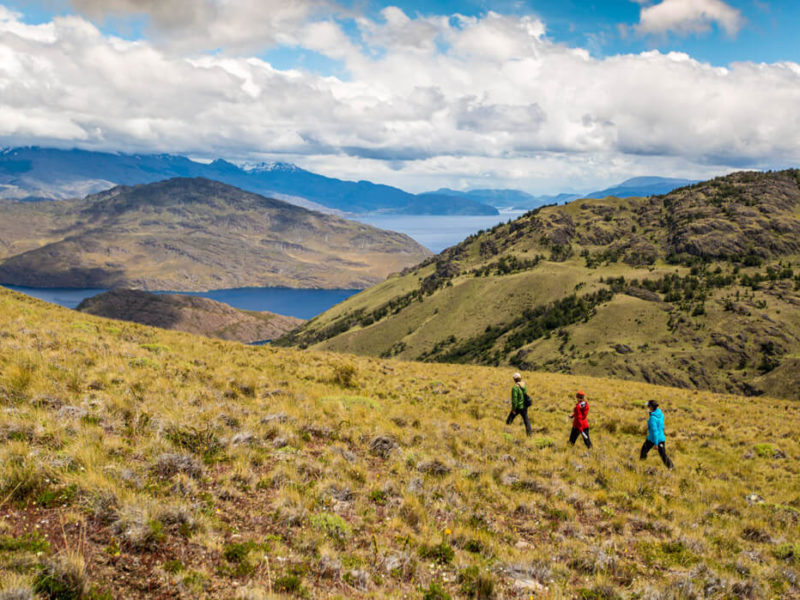
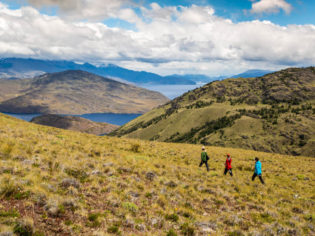
Patagonia is renowned as one of the world's top places to explore on foot.
A portal to some of Patagonia’s most spectacular remote places, Chile’s newly created Route of Parks is also a landmark in wilderness conservation and a catalyst for grassroots tourism.
You’ve been to Yendegaia?” Ricardo is looking at me and my friend and shaking his head in disbelief.
Yes, he lives in southern Chile’s mind-bogglingly beautiful Aysén region – in a pristine valley where waterfalls stream into turquoise lagoons, with a glacier more or less at the bottom of his garden – but that doesn’t curb his wanderlust for the country’s furthest reaches.
Everyone from naturalist Charles Darwin to bank robber Butch Cassidy and author Bruce Chatwin has done their bit to mythologise Patagonia over the centuries, firing up the imaginations of travellers the world over. And, even for those who live here, this immense wilderness at the foot of South America, shared between Chile and Argentina, holds untold mystery and magnetism.
In this case, it’s a national park on the tip of the continent on a windswept archipelago called Tierra del Fuego that’s given Ricardo travel envy. It’s hard to reach, he says admiringly, and we were very lucky to go: “It’s the central point of the middle of nowhere.” An appropriately decalibrating spot to have started our journey, then, in a land where sunlight stretches deep into the night and even my iPhone doesn’t seem to know what time it is.
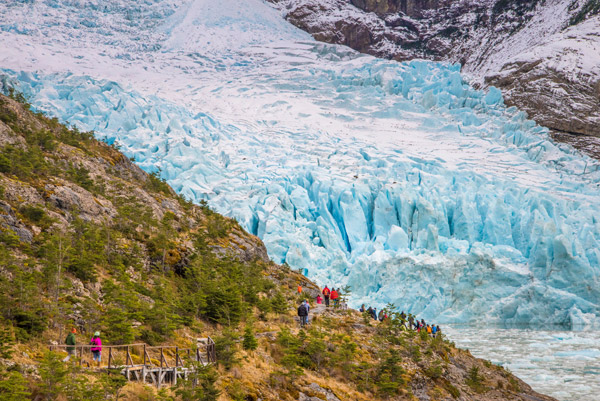
Glaciers in Patagonia contrast with land to make for spectacular panoramas.
Four days earlier, we had followed a road that is still being built to get a glimpse of this park at the end of the world (or the end of Chile, at least – just a stone’s throw from Ushuaia, in Argentina, where expeditions leave for Antarctica).
With snow-capped mountains and mossy green valleys cradling lakes of unbelievable blue, Yendegaia lies at the southern extremity of the Route of Parks of Patagonia: a 2800-kilometre scenic route that spans 17 national parks, integrating the Carretera Austral (Southern Highway) with the Patagonian Channels and the Ruta del Fin del Mundo (End of the World Route).
Less a physical trail to travel from A to B and more a concept designed to inspire, the Route of Parks encompasses 11.5 million hectares of Patagonia’s diverse landscapes and ecosystems across three regions and invigorates more than 60 communities along the way. Launched in 2018, it signals a new vision for conservation in Chilean Patagonia.
Some national parks, like Yendegaia, are not yet open to the public. Others, like Torres del Paine – with its jagged peaks and famous O and W circuits – are very much established for visitors. But most exist in a sweet spot in between: with environmentally sensitive infrastructure in place and locals running grassroots endeavours with sustainable tourism, not tourist dollars, in mind.
They’re truly wild places where you’ll find yourself alone with the elements yet never too far from a cosy cabin made of local hardwoods, a pair of wool slippers and a pisco sour.
Going Deep South: Magallanes
The Patagonian steppe folds into itself as we twist up what’s essentially one of the first mountains of the Andes and look down from its summit to the lake we’re heading for far below.
Our road trip deep south from the ferry port at Porvenir has already enamoured me to strange and beautiful Tierra del Fuego – its windblown trees and wildflower-strewn coastline that winds around bays named uncharitable things like Useless by Old World explorers; its sherbet-coloured salt lakes, wading flamingoes and grasslands populated with guanacos and the odd gaucho – and now I’m about to discover one of its best-kept secrets.
Those explorers were clearly in a better mood the day they set eyes on Lago Deseado, Desired Lake. But then again it’s easy to fall in love with this spot: 12 kilometres of silent, silvery water with a mountain that’s actually in Argentina square on its horizon and a namesake lodge set lightly on its shores (the only human intervention around here).
Built with lenga beech – the spirit tree of Patagonia – Lodge Deseado almost dissolves into the landscape: what was once simple digs for anglers was reimagined by two local architects into nine rustic-chic cabins connected by a boardwalk. There’s a communal clubhouse, too – all Fuegian textures and textiles – and before dinner I browse its library of books that tell the natural and ancestral stories of the archipelago.
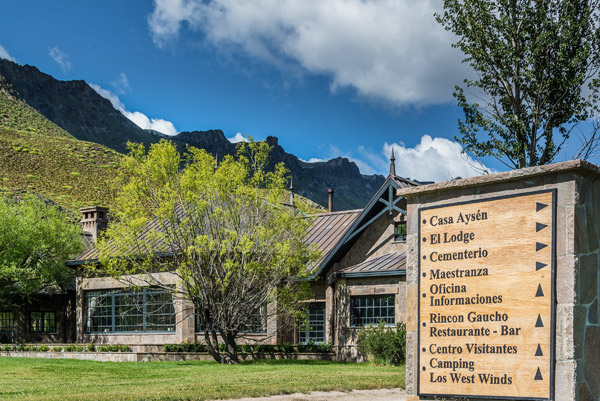
Lodge accommodations offer comfort amid a wild terrain.
When I retreat to my cabin I feel completely cocooned by its woody warmth and big-knit blankets; even though it’s summertime and doesn’t get dark here until past 10pm, I can easily imagine the winter days when the sun barely rises.
The atmosphere here on Tierra del Fuego is cool and tempered despite what its feverish name suggests. When Portuguese explorer Ferdinand Magellan, sailing under the Spanish flag, first navigated what would become known as the Strait of Magellan in 1520 – opening up a critical natural sea route between the Atlantic and the Pacific – the plumes of smoke he saw rising from this land (bonfires lit by its indigenous people) gave him pause to dub it Tierra del Humo, Land of Smoke.
But the King of Spain said there was no smoke without fire and changed the name to Tierra del Fuego, Land of Fire. Seeking a western passage to the Spice Islands, explorers weren’t interested in this inhospitable land and its people at first; European settlement came later, in the 1800s, with the lure of gold and prime grazing grasslands.
Back out on the steppe, a stay on an estancia (ranch) provides a window into the farming traditions and lifestyle that developed to create a culture so distinct that people here consider themselves resolutely Patagonian, not Chilean. It smells of fresh grass and wood stoves in the morning as we eat rhubarb marmalade on toast in the dining room at Estancia Caleta Josefina; the farmhouse built at the end of the 19th century is now an elegant hotel with an old-world atmosphere.
Proprietor Carlos grew up on an estancia in Argentina and once led six-day horse expeditions through the mountains of Torres del Paine National Park. Wearing the traditional beret borrowed from the Basque Country and sipping mate tea the proper way (from a gourd, through a bombilla metal straw, a thermos of hot water tucked under his arm for top-ups), he’s a real-deal gaucho (a legendary cowboy figure of the South American grasslands).
We follow him to the shearing shed after breakfast where he sets about work with the aid of his Patagonian sheepdogs, Cual and Pampera; first administered by Alexander Cameron, an expert in the sheep industry from New Zealand, this was once the most important shearing shed in Chile.
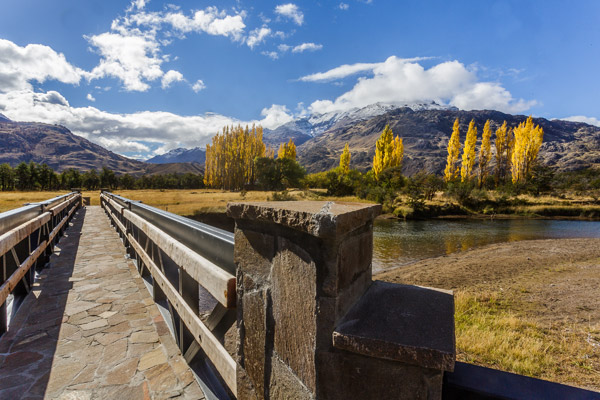
Patagonia goes through substantial changes as the seasons transition.
Tierra del Fuego has other grand claims. Its capital Porvenir – so far-flung its name literally means ‘to come’ – was founded in 1893 on wealth ushered in by a gold rush and settled largely by Yugoslav immigrants and others with a pioneering spirit and disposition for cold climates.
Its international milieu meant it became one of the first places in Chile with phone lines and street lighting, and the first to boast a cinema. This prosperity came at the direct expense of the Selk’nam, a nomadic tribe who lived in the island’s interior and had long thrived in the harsh environment. They wore the same kind of guanaco-skin moccasins worn by the indigenous tribe of Patagonia that first inspired the description patagones (big-footed people).
Sadly, the Selk’nam were forced into extinction in what is now recognised as a genocide. Tales of missions, imported diseases and bounty hunting abound, but their spirit lives on in local folklore, in Porvenir’s fascinating museum and in unexpected places – like the eclectic walls of La Luna restaurant in the Magallanes region’s historic capital, Punta Arenas.
We leave Tierra del Fuego, sailing back across the Strait of Magellan, for Puerto Natales – a port city backed by mountains that’s the gateway to Torres del Paine National Park. We sight its iconic three peaks as we cruise on a catamaran across Seno Última Esperanza, Last Hope Sound, but today we’re heading elsewhere: into Chile’s largest national park, Bernardo O’Higgins, whose fjords, icebergs and glaciers form part of the epic Southern Patagonian Ice Field.
We know the impermanence of glaciers only too well, and in a place like Patagonia that has been sculpted by them, being in their presence feels almost spiritual. Today, in the sun, Balmaceda Glacier sparkles blue and white like precious stones as we glide quietly past.
We alight further on to trek to Serrano Glacier, where ragged ice that looks frozen in time staggers down the mountainside into its self-made lagoon, turquoise with minerals. Back onboard we’re offered whisky on the rocks with glistening chunks of glacier-fresh ice.
Later, we eat lunch at Lenga restaurant in Puerto Natales. A flawless showcase of contemporary Chilean cuisine, our meal brings together everything we’ve experienced in Patagonia’s deep south on a plate and in a glass. “Everything is local and dependent on what’s in season”, says our host, Paula.
Moreish sopapillas, fried dough made with pumpkin, are served alongside the restaurant’s interpretation of pebre (the salsa-like dish eaten ubiquitously in Chile as an appetiser), cochayuyo (the particular seaweed found in abundance on southern Chile’s beaches), merkén (smoked chilli pepper, a traditional condiment in indigenous Mapuche cuisine) and local sea salt – the best in the country, we’re told.
Mains include dishes like hearty lamb shanks and ocean-fresh octopus, while I opt for a stew-like dish of chickpeas cooked in a pil-pil sauce – another Basque export. There’s craft beer made here in Patagonia and red wine “with influence from the Andes”, says Paula, and my dessert – all textures of chocolate and berries – is presented artfully on a shiny black slab of mudstone, last seen as we navigated those switchbacks from Lodge Deseado towards Yendegaia.
It includes calafate – the berry we’ve seen while hiking that’s the stuff of Patagonian folklore: once you taste it, you’re destined to return. As we leave, chef Rodrigo hands us each a small paper bag of salt to take away as a memento; Lou Reed’s Walk on the Wild Side plays, fittingly, on the stereo.
Around the lake: Aysén
We fly north from Magallanes and touch down at windy Balmaceda Airport to begin an exploration of Aysén, Chile’s least-populated region but according to many, its most beautiful. Our road trip will skirt the shore of Lago General Carrera – the largest lake in Chile, and the second largest in South America – and take in the iconic Carretera Austral.
For the large part still an unpaved gravel road, the Southern Highway runs through rural Patagonia until it hits the Southern Ice Field and can’t go any further. It’s all undulations, hitchhikers and cyclists with their whole world packed into their panniers. It’s proper traveller territory.

The vivid blue waters are a trademark of Aysen’s appeal.
Hand-painted signs for campsites boast the luxury of hot showers and guys on the roadside sell empanadas del horno; I ask what horno means and our local guide Pancho says ‘heaven’, before quickly correcting himself: ‘oven’. But it’s too late, I’m stuck on the idea of empanadas from heaven – it suits the scenery.
Aysén is a place where everything in nature seems to happen at once – mountains, valleys, glaciers and rivers collide at every corkscrew bend. “It’s like the world erupted from this point outwards,” says Pancho.
We catch our first glimpse of the Cerro Castillo massif, named for its peaks that suggest the spires of a fairy-tale castle, at the first of many spectacular miradores (lookouts). Recently upgraded from a natural reserve to a national park (the gold standard of protection), its trekking circuit is earning cult-like status in Chile and beyond.
At the bottom of the hill in Cerro Castillo village, we meet Mary, an Ohio native, who first travelled here as a student in sustainable tourism and fell in love with a local Patagonian “horse-whisperer type” called Cristian. Together they set up their own company, Senderos Patagonia, leading hikes and rides through the mountains, and established a hostel and camping facilities.
When Cerro Castillo became a national park two years ago, the couple – on the condition they were from the region – won a concession to administer the tourist areas of the park.
They set about improving trail conditions, campsites, signage and more, taking care of this protected area that had already given them so much, and giving back, too: a proportion of the funds generated by entrance park fees is donated to the local high school’s tourism program.
These grassroots initiatives are indicative of what’s happening across the Patagonian wilderness: “Most tourism has been generated by locals,” Mary says. “In general it has been from the ground up.”
The paved road runs out not long after leaving the village and we pass by a lagoon of the deepest emerald green, Laguna Verde. In another part of the world, this could be a big-ticket attraction. But here, it’s just there, with no development in sight.
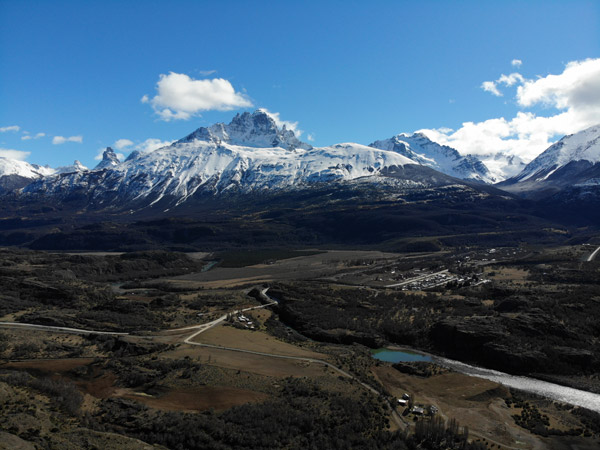
A light dusting of snow gives Chile’s peaks additional appeal.
We continue on to Puerto Río Tranquilo, the gateway for exploring some of the region’s star attractions including a series of caves set deep in Lago General Carrera sculpted entirely, naturally, of marble. As remote as they are, the Capillas de Mármol were never destined to stay hidden in the Instagram age.
Over the following days I hear those wanting to safeguard their own patch of lakeside paradise lament the changes they’ve seen in Puerto Río Tranquilo – they remember the days when talk of the Marble Caves was just a tip from an old man in an old wooden boat.
But what I see here today on the main drag for tour operators is a dusty track and some wood-shingled shopfronts. A poster of a dog on a kayak spruiks kayaking tours, and the same dog, aged slightly, lies lazily next to it. The queue of hitchhikers at the service station for the lone public toilet is one thing that might suggest overtourism here, but when you’re in town the night the gauchos throw a party in the community hall, complete with traditional music and dancing, you can’t help but feel ensconced in local life.
Our hotel, too, taps into local tradition and sets the tone for tourism done responsibly. Delightful Hostal El Puesto is modelled on the tiny houses, los puestos, that gauchos traditionally used as shelters while out in the wilds grazing their animals during summer. All local hardwoods and Patagonian wool slippers that you slip into in the lobby, the concept is underpinned by an eco-conscious ethos that includes all produce made in-house with the help of a kitchen garden and beehive out back.
Wanderluster Ricardo, down the road at La Nutria, is doing things right, too. In an idyllic valley between town and Exploradores Glacier in Laguna San Rafael National Park, he runs this cafe, on solar power where possible, with his parents.
They followed their heart south from Santiago to bake their own bread, grow their own veggies and source local organic meat: serving just-made sandwiches, burgers and sweet fruit pies to appreciative adventurers like us fresh from an ice trek.
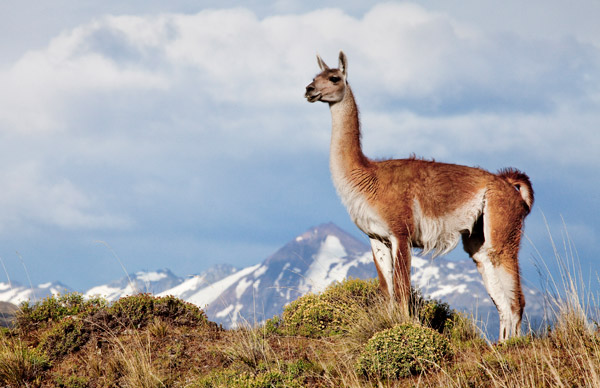
The guanaco is native to South America and one Patagonia’s signature species.
Further around the shore in the sleepy enclave of Puerto Guadal – where chickens literally cross the road – Dutch ex-pat Stefan runs El Mirador de Guadal with his wife Carolina in an impossibly scenic spot: the lodge’s 10 timber cabins are perched on a steep grassy bank overlooking the lake, the Northern Ice Field and San Valentín, the highest peak in Patagonia.
They’ve been here since the late 1990s, and with the secret ‘out’ on nearby Puerto Río Tranquilo, feel the region needs to slow down a little if visitation is to stay sustainable.
“We should keep the beauty as it is,” Stefan says before we settle in for dinner at the restaurant. “If 1 million people are coming here it’s not the same.” He posits a simple solution. “Not paving the road is a natural barrier for too-quick development. If the road is not paved, [the region] will develop, but in its normal way – which the village can handle.”
With that, he receives word his sheep are loose on the road and heads off with his dogs to retrieve them; I can’t imagine this spot losing its rustic charm just yet.
The next morning we trail down to the jetty of another lodge nearby and climb aboard a 10-seater jet boat. We sluice through the lake before following the course of a thistle-green river, past wild horses and geese, to reach our destination that’s not accessible by road and foot: luminous Leones Glacier.
Cascading down the side of a mountain, this ancient glacier is staggering in size yet fast disappearing: it has lost two-thirds of its wall in two decades, says Philippe, the owner of the lodge, who has been running visitors out here on his jet boat in that time.
After years spent guiding in other parts of Chile, Philippe has seen first-hand how mainstream tourism can change a place: what happens when the roads get built, the hotels spring up and the buses roll in. He hopes his small offering today is niche enough for this special spot to stay under the radar but still fears the worst. His conscience is conflicted, he explains, as we sit to eat our packed lunch on the granite rocks at the glacier’s fringe.
“It’s my job so I need the tourists, but I don’t want this to change” – by that he means the few of us here, quietly appreciating the landscape, making sure to leave no trace, and realising the privilege of the experience. “What I’ve learnt with time is one way to protect places is not to name them” – he continues: no hype, no social media. He throws the quandary back at me, here to do the very thing he’s worried about. Do I give it all away – or do I write instead that you’ll just have to come to Aysén to find Philippe for yourself?
After lunch, I climb up the rubbly moraine of the glacier. I watch as Leones calves, ice tumbling like boulders into the lagoon, cracking and thundering like a round of distant gunfire. It’s awe-inspiring and knee-weakening – we’re no match for nature – but it’s heartbreaking to know that one day it won’t be here. Which draws me to something I’ve been puzzling over.
“We wanted to be strong like a lenga,” Paula had said in Puerto Natales when I asked how the restaurant got its name. But everywhere we’d been I’d noticed the tree succumbed to the elements: twisted on mountainsides and broken like pencils snapped in half in riverbeds. It seemed like a dichotomy, but now I realise it isn’t so much that as it is simply nature.
Travelling through Patagonia, climate change is on everyone’s lips because here you can feel for yourself the natural world at its most superlative and vulnerable. Strong, yes, but fragile, too – just like a lenga.
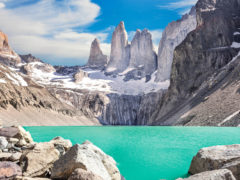
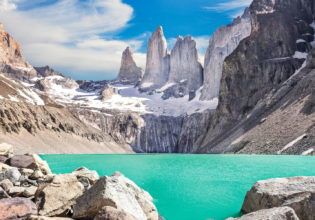
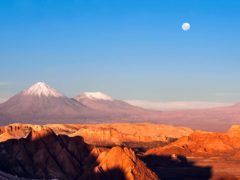
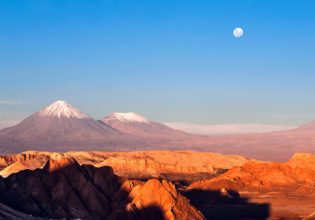

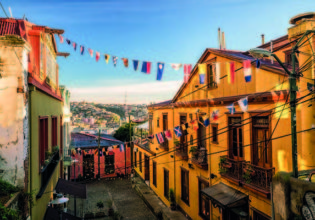
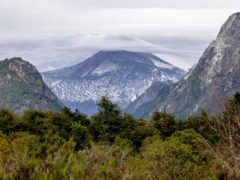
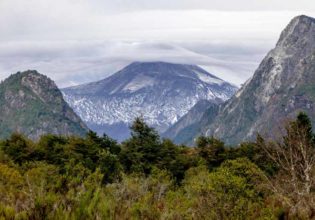
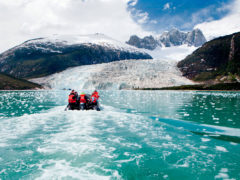
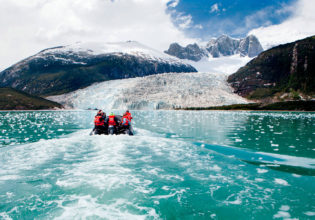

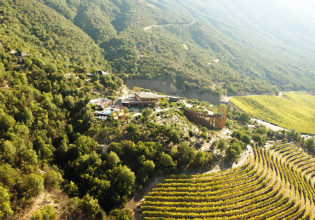


LEAVE YOUR COMMENT